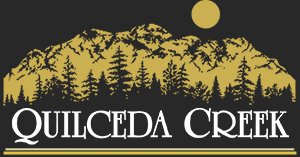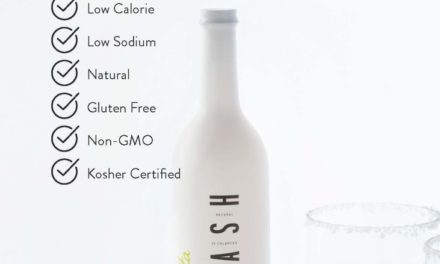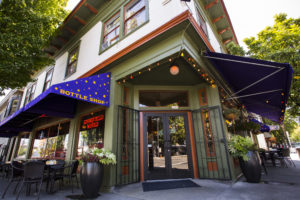
[Photo courtesy McMenamins]
McMenamins is a family-owned group of pubs and restaurants in Oregon and Washington state. It’s also a hotel group and a craft beverage juggernaut, making beer, wine, distilled spirits, cider, and house-roasted coffee. It runs two of the most popular music venues in Portland, Ore. It’s also a golf course operator, a game-changer in the movie theater industry, a patron of the arts, and a master of adaptive reuse of historic properties.
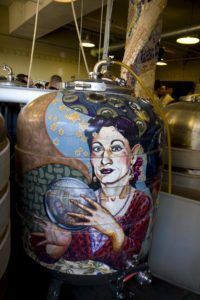
[Photo courtesy McMenamins]
The Beginning of McMenamins
The early days of McMenamins were humble. Mike got his start in the hospitality industry by helping open Produce Row in 1974, one of the first craft beer bars and pubs in Portland. From there, he and Brian launched a series of pubs that stuck with the proven formula of burgers and beer delivered in a casual setting evoking the freewheeling, countercultural days of the 1960s. The concept worked—hey, everybody likes burgers—but Brian and Mike had another, bigger idea.
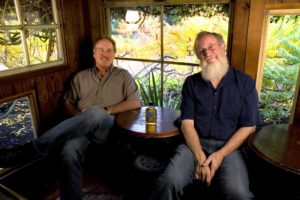
The McMenamin brothers [Photo courtesy McMenamins]
Quickly, they ran up against a major barrier: In Oregon, it wasn’t legal to serve alcoholic beverages in the same place they were produced. Undeterred, Mike and Brian partnered with other craft beverage pioneers (including the Widmer brothers and Dick and Nancy Ponzi) to lobby the state legislature. After an unsuccessful first attempt, legislation was passed in 1985 that made brewpubs and winery tasting rooms legal in Oregon for the very first time.
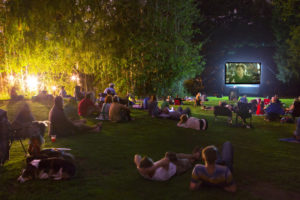
[Photo courtesy McMenamins]

[Photo courtesy McMenamins]
In 1990, Brian and Mike were presented with an opportunity. A 74-acre parcel in the Portland suburb of Troutdale was on the proverbial chopping block. The land had been used first as a “poor farm,” an institution where Portland’s destitute could live and farm. After the New Deal, poverty declined, and eventually the land was also the site of a county prison and, later, an assisted living home.
By the 1980s, the property had fallen into disrepair, and had been slated for demolition before the Troutdale Historical Society intervened in 1985, arguing the building’s historic significance was worth preserving. All it needed was a visionary new owner, somebody who could see potential in the dilapidated buildings and abandoned farm fields.

Clark McCool [Photo courtesy McMenamins]
Today, locals lovingly describe Edgefield as “Disneyland for grown-ups.” The former manor where the impoverished were housed is now a 100-room hotel. None of the rooms have televisions or telephones, but guests don’t need them, because there’s plenty to do. The property features 32 holes of pitch-and-putt golf, a fine dining restaurant called the Black Rabbit, several pubs, a spa, soaking pool, concert and event venue, winery and vineyard, brewery, distillery, glass blowing studio, pottery studio, gardens, pool and game hall, and a sprawling park-like campus dotted with tiny atmospheric pubs just waiting to be discovered.
Edgefield, like all McMenamins properties, is built on a foundation of beverages. “The first thing they did when they bought the Edgefield property was put in a winery,” says McCool. It was the company’s first. Brother Mike had previously been involved in wine distribution, and while the Willamette Valley wasn’t anywhere close to achieving the kind of renown it enjoys today, the McMenamins had a hunch that the future of Oregon was a vinous one.
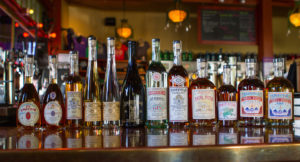
[Photo courtesy McMenamins]
In 1992, predating the current boom by more than 20 years, McMenamins started making cider. Today, it sells as much cider by volume as wine. In 1997, McMenamins began building its first distillery in an old root vegetable storage barn on the Edgefield campus. They’d begun dabbling in distillation in 1995 by having some brandy made under contract by Carneros Alembic, a California distillery owned by Remy-Martin. “Mike was smart enough to know well-made spirits take a long time to develop, so we got a jump on it,” says McCool. By the time the company opened the distillery in 1998, it already had 13 barrels of brandy aging—some of them are still aging today.
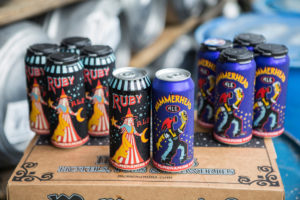
[Photo courtesy McMenamins]
The Edgefield distillery uses a Holstein pot still, which the McMenamins selected based on its versatility. The head distiller at the time, Lee Medoff (now the owner and head distiller at Bull Run Distilling) developed a unique style of malt whiskey made with 100 percent malted barley, like traditional Scottish malt whisky, but aged in new charred American oak barrels like bourbon or rye. Hogshead Whiskey is still made that way today, and it’s the company’s most popular whiskey.
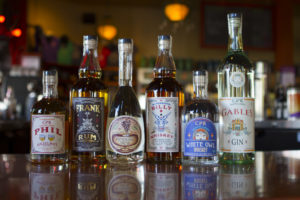
[Photo courtesy McMenamins]
Want to find a bottle of McMenamins spirits or wine? Don’t look for it at your local liquor store. “All of our products are made by us and served and sold solely throughout our locations,” explains McCool. “We don’t distribute outside of our company. It’s a unique business model, but it’s proven to be very successful for us, and we’ve thrived on that.”
Art Ties Everything Together
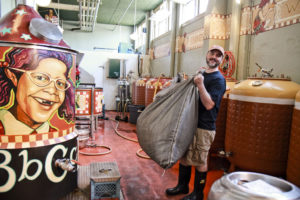
Kennedy School’s Concordia Brewery in NE Portland. [Photo courtesy McMenamins]
Because the McMenamins concept is so expansive, it could easily start to feel fragmented and disconnected. Yet it doesn’t. Visitors always know when they’re in a McMenamins, and it’s not because of the Cajun tater tots on the menu. It’s the aesthetic.
Art and design are a lynchpin in the McMenamins concept. One part Grateful Dead liner notes, one part Dali-esque surrealism, and one part historic Americana, the McMenamins style is distinctive and unmistakable. A maximalist bent means the walls of every property are lined with original paintings, historic documents, textiles, concert posters, and sundry memorabilia, some walking the thin line between fact and fiction. Set against the backdrop of some of the Northwest’s most historic properties, it’s a heady mix of alternative lifestyle whimsy and Old West edge.
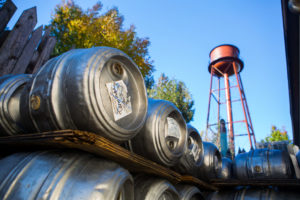
[Photo courtesy McMenamins]
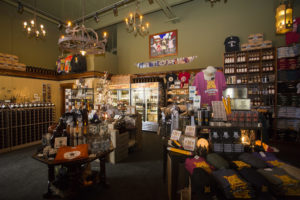
[Photo courtesy McMenamins]
In a time when every decision seems made by committee and focus group, there’s something refreshing about a company with a personal vision and the courage to see it through.


























